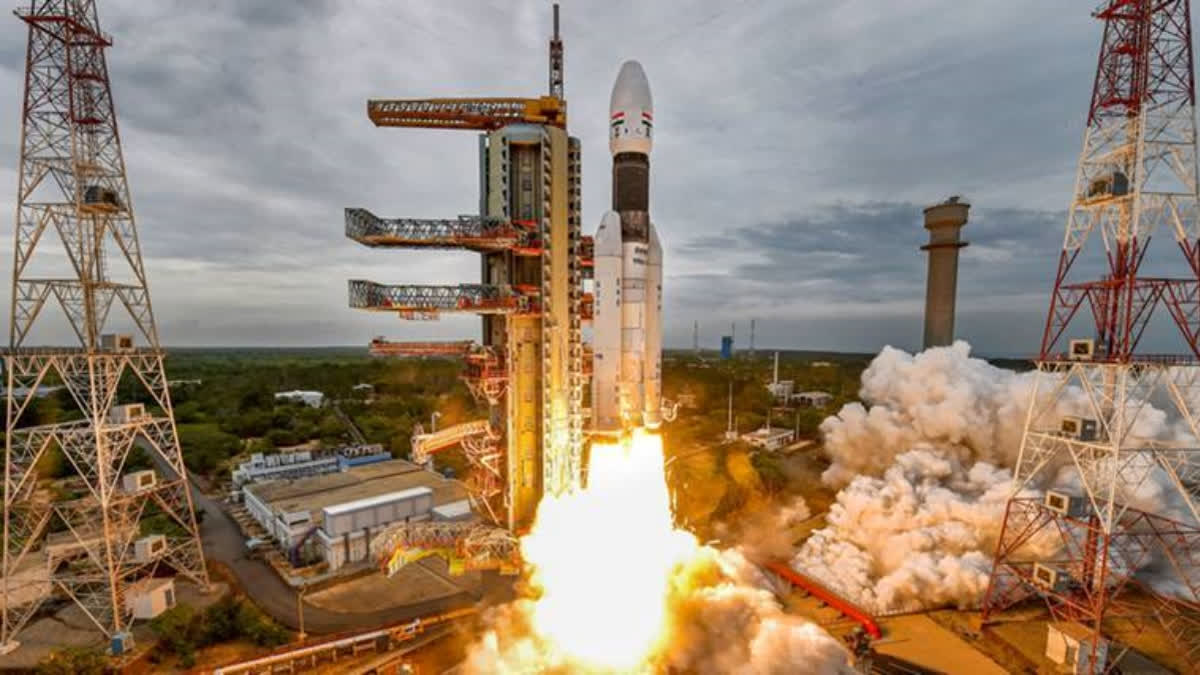Bengaluru: Chandrayaan, the name deriving from the Indian language, “Chandra- Moon, Yaan-vehicle”, translated as the lunar spacecraft or the moon craft. Chandrayaan-3 is an upcoming lunar mission led by the Indian Space Research Organisation (ISRO). The launch of Chandrayaan-3 has been scheduled for July 14, 2023, at 2:35 pm IST. Building upon the success of its predecessors, Chandrayaan-1 and Chandrayaan-2, this mission aims to further explore the lunar surface and expand our scientific understanding of our earth's celestial neighbour.
Let's delve into the details of Chandrayaan-3 and the impact it may have on India's space exploration endeavours:
The primary objective of Chandrayaan-3 is to conduct a soft landing on the lunar surface and deploy a rover to explore the landing site. Through this mission, India seeks to enhance its technological prowess in space exploration and gather valuable scientific data about the moon's geology, mineralogy, and surface composition.
The mission components will consist of a lander and a rover similar to Chandrayaan-2, but would not have an orbiter. The launcher identified for Chandrayaan-3 is GSLV-Mk3 which will place the integrated module in an Elliptic Parking Orbit (EPO). Its propulsion module will behave like a communications relay satellite. The propulsion module will carry the lander and rover configuration until the spacecraft is in a 100 km lunar orbit. The propulsion module, in addition to the lander, carries a payload called Spectro-polarimetry of Habitable Planet Earth (SHAPE) to study the spectral and polarimetric measurements of Earth from the lunar orbit. Chandrayaan-3 will be launched by the LMV3 (Launch Vehicle Mark-III) from Satish Dhawan Space Centre (SDSC) SHAR, Sriharikota, the Spaceport of India.
Chandrayaan-3 draws inspiration from Chandrayaan-2, which was launched in the July of 2019. While Chandrayaan-2's lander Vikram had an unfortunate landing attempt, the mission's orbiter continues to operate successfully and has provided valuable data about the moon, according to ISRO scientists. Chandrayaan-3 aims to rectify the shortcomings of the previous mission's lander and achieve a successful soft landing.
Also read: ISRO getting ready for Chandrayaan-3 mission in July 2nd week: Senior official
The scientific objectives of Chandrayaan-3 are diverse and comprehensive. The mission aims to map the lunar surface, study the moon's exosphere, conduct mineralogical analysis and determine the elemental composition (Mg, Al, Si, K, Ca, Ti, Fe) of Lunar soil and rocks around the lunar landing site as well as examine the presence of water molecules. By gathering this crucial data, scientists hope to enhance our understanding of the moon's evolution, its geographical processes, and its potential as a resource for future human missions.
Chandrayaan-3 is not solely an Indian endeavour. The Moon Village Association (MVA) and the Indian Space Research Organisation (ISRO) announced to host global outreach activities in connection with the proposed Chandrayaan-3 launch by Indian Space Research Organisation. Confirming the existence of the project(Chandrayaan-3), ISRO's former chairman K. Sivan stated that the cost would be around ₹615 crore (US$77 million). The mission offers the opportunity to increase the impact of the ISRO lunar programme on a global scale and foster further international cooperation. The two organisations are cooperating to focus on the global aspect of lunar exploration and identify, communicate, and encourage the youth to focus on the mutual benefits that the entire world gets at every lunar `mission.
Chandrayaan-3 has generated widespread public interest and enthusiasm in India and beyond. Similar to its predecessors, the mission aims to inspire and educate the younger generation, fostering scientific curiosity and passion for space exploration. The advancements made in Chandrayaan-3 will contribute to India's growing reputation in the field of space and science technology.
The impact of Chandrayaan-3 extends beyond its immediate scientific goals. It signifies India's commitment to pushing the boundaries of space exploration and showcasing its technological capabilities on an international stage. The successful execution of Chandrayaan-3 would cement India's position in the global space community.
Also read: Hours ahead of Chandrayaan-3 mission next week, Sriharikota to witness a unique 'launch'



